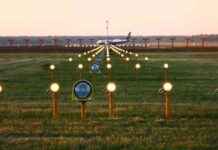U.S. President Joe Biden, European leaders and Russian oligarchs were reacted by imposing sanctions on Russian banks and oligarchs.
Both leaders indicated that a bigger confrontation was possible. Putin has not yet unleashed the force of 150,000 troops positioned on three sides Ukraine. Biden resisted the harshest sanctions that could create economic turmoil for Russia, but stated they would continue to do so if Russia acts further.
These measures were accompanied by the repositioning additional U.S. soldiers to the Baltic countries on NATO’s east flank bordering Russia. This was as Russian forces entered rebel-held areas of eastern Ukraine, after Putin declared he would recognize the independence of the separatist area in defiance U.S. and European demands.
Biden, speaking at the White House said that the Kremlin had flagrantly broken international law in “beginning of Russian invasion of Ukraine”. He warned that there would be more sanctions if Putin did so.
Biden stated, “We are united in support of Ukraine.” “We are united against Russian aggression,” Biden stated. We will not be fooled. There is no reason to believe otherwise.
The hope for a diplomatic solution to the threat from invasion, which U.S. officials for weeks have portrayed as inevitable, seemed to vanish. Antony Blinken, the U.S. Secretary-of-State, cancelled plans to meet in Geneva on Thursday with his Russian counterpart. He claimed that it would not produce results and that Russia’s actions showed that Moscow wasn’t serious about finding a peaceful solution to the crisis.
Western nations tried to unite, and more than twenty-six European Union members agreed to impose their first set of sanctions on Russian officials. Germany also announced it would not certify the Nord Stream 2 pipeline from Russia. This lucrative deal was long sought by Moscow, but criticized by America for increasing Europe’s dependence on Russian energy.
Meanwhile, the U.S. moved to isolate Russia’s government form Western finance by sanctioning two of its banks, and preventing it from trading its debts on American and European markets. The actions of the administration targeted civilian leaders in Russia’s leadership hierarchy, as well as two Russian banks that were considered particularly close to the Kremlin. They also blocked trading in Russia’s debt on American and European markets. This includes the freezing of all assets belonging to those banks that are under U.S. jurisdictions.
Biden did however hold back some of most severe and broadest financial sanctions contemplated in the U.S. This included sanctions that would strengthen the hold Germany has on any startup of Nord Stream 2; an export ban that would deprive Russia of U.S. high tech for its military and industries; and sweeping bans which could severely limit Russia’s ability do business with the rest.
Biden stated that he was moving additional U.S. soldiers to the Baltics. However, he said the actions were purely defensive and asserted, “We have not intention to fight Russia.” According to a senior defense official, the U.S. will send approximately 800 infantry troops to the Baltics and NATO’s eastern flank from other European locations. A contingent of F-35 strike aircraft and AH-64 Apache attack helicopters from the United States will be also relocated.
On Tuesday, Russia’s top house, the Federation Council voted unanimously for Putin to use military force beyond the country. This effectively authorizes a Russian military deployment in rebel areas, where nearly 14,000 have been killed over the course of an eight-year conflict.
Soon afterward, Putin set out three conditions for ending the crisis that threatened to plunge Europe into war. This raised the possibility of large casualties, fuel shortages across Europe, and global economic chaos.
Putin stated that the crisis could be solved if Kyiv recognized Russia’s sovereignty in Crimea. This is the Black Sea peninsula Moscow annexed from Ukraine back in 2014. He also suggested that Kyiv renounce its bid to join NATO, and demilitarizes. The West has repeatedly rejected Ukraine’s permanent exclusion from NATO and decried the annexation Crimea.
Putin was asked if he had sent Russian troops to Ukraine, and if so how far. He replied that it was impossible to predict a pattern of action. It will all depend on the concrete situation on the ground.
The EU announced the first sanctions against 351 Russian lawmakers, 27 Russian officials and institutions in the defense and banking industries. They also attempted to restrict Moscow’s access EU capital and financial market.
Tensions are rising and a wider conflict is more likely. The White House started to refer to Russian deployments to the Donbas region as an “invasion”, after initially being reluctant to use the term. This was a red line that Biden had warned would lead to severe sanctions.
Jon Finer, principal deputy to the national security advisor, stated on CNN that “this is, yes. The beginning of an invasion,” and that Russia’s latest invasion into Ukraine was underway. “Invasion is an invasion and that is what’s happening.”
Soon after Putin announced that he would send troops to Ukraine, the White House issued limited sanctions against the rebel-region on Monday evening. Reporters were briefed by a senior Biden administration official about the sanctions against the rebel-region. He noted that Russia had occupied these areas since 2014 and that Russian troops moving into Donbas was not a new move.
Since the Cold War, Western leaders warned Moscow that it would seek cover to invade. Monday’s recognition by Putin of two independent regions in eastern Ukraine was a clear indication. These are areas where Russian-backed rebels were defeated by government troops. The Kremlin added to the tension by stating that Ukraine recognizes large portions of the territory.
Putin stated that Russia had recognized the independence of the rebel regions in the borders they declared in 2014. These were large territories that extended far beyond the area currently under separatist control, and include Mariupol, the Azov Sea port. However, he said that the rebels should negotiate with Ukraine.
The condemnation was swift from all corners of the globe. Washington lawmakers from both political parties backed independent Ukraine and pledged continued U.S. support. Some pushed for more severe and faster sanctions against Russia. Although senators were considering sanctions against Putin’s regime, they resisted as the White House continued its strategy.
Volodymyr Zelenskyy, the Ukrainian president, said that he would be open to cutting diplomatic ties with Russia. Kyiv also recalls its ambassador in Moscow.
NATO chief Jens Stoltenberg said that if Putin pushes into Ukraine, the West will follow his lead. He stated that Russia could use force again against Ukraine if it decides to do so.
Boris Johnson, the British Prime Minister, stated that sanctions would be imposed on five Russian banks as well as three wealthy individuals by the U.K. He said that a full-scale attack would result in “further severe sanctions.”
Zelenskyy stated that he was calling up some military reservists from the country, but said there wasn’t need to mobilize all of them.
Zelenskyy addressed the nation and stated that his decree only applied to those who were assigned to the “operational reserve,” which is activated in ongoing hostilities. He did not clarify what it means.
“Today, there is no need to mobilize the entire army. He stated that we need to rapidly add staff to the Ukrainian army, and other military formations. Oleksii Danilov, National Security and Defense Council Oleksii Danilov, stated earlier in the year that Ukraine could call up to 2.5million people.
___
Karmanau reported in Kyiv, Ukraine. Tucker and Madhani reported from Washington. Jill Lawless in London, Lorne Cook, Barry Hatton, Lisbon, Portugal; Dasha Livinova, Moscow; Geir Mulson, Frank Jordans, and Edith M. Lederer in Berlin; Edith M. Lederer, Ellen Knickmeyer and Matthew Lee, Zeke Miller and Chris Megerian, all contributed to this report. Darlene Superville, Washington, and Darlene Suville also contributed.








